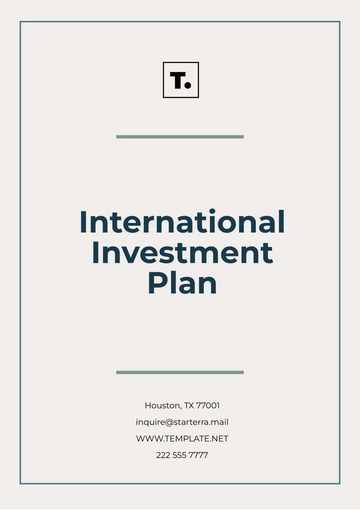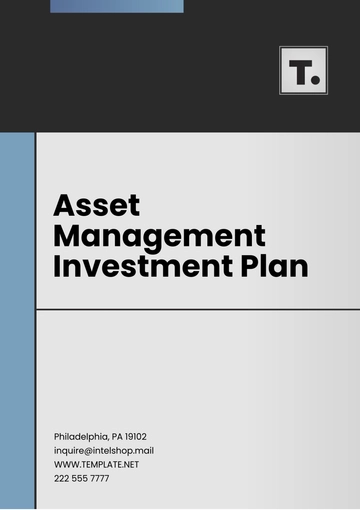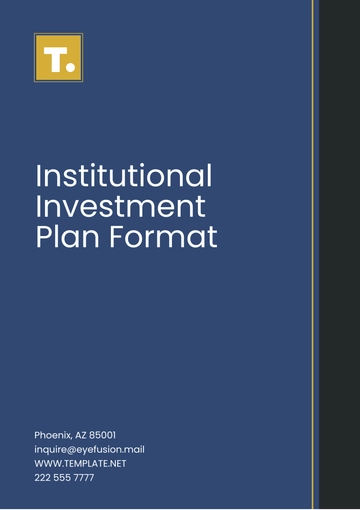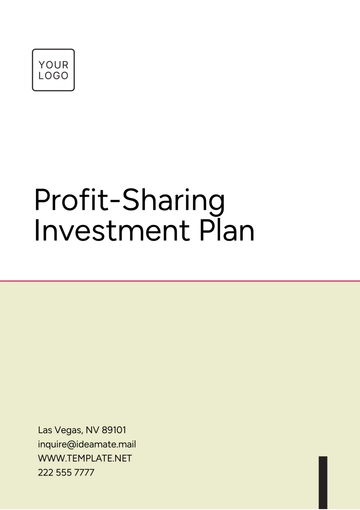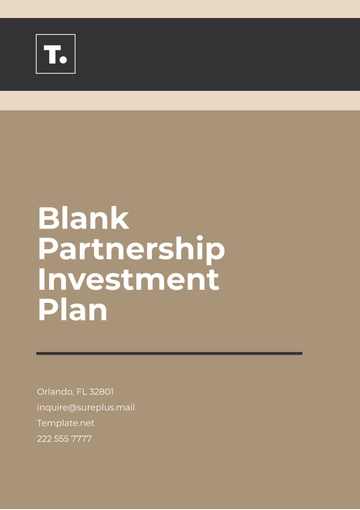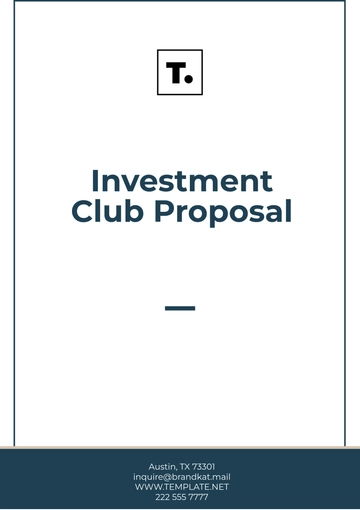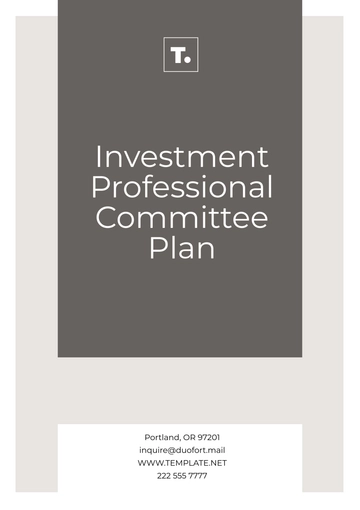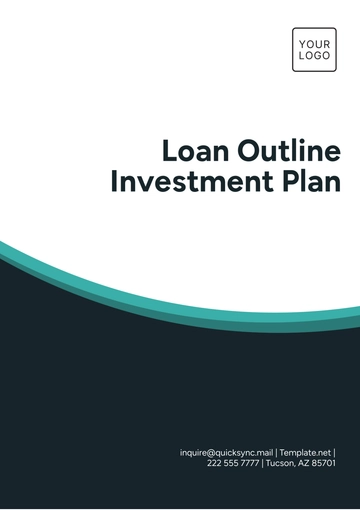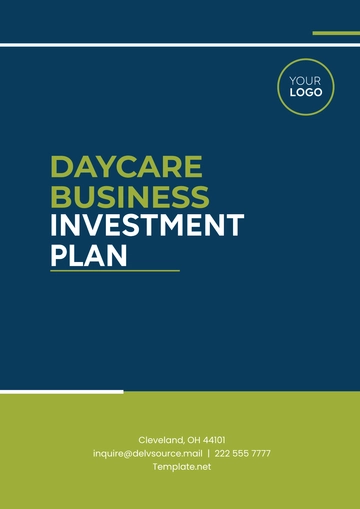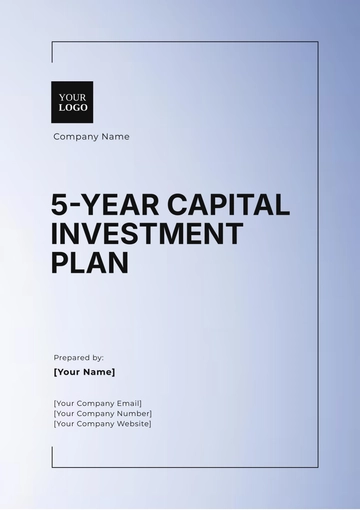Free Profit-Sharing Investment Plan
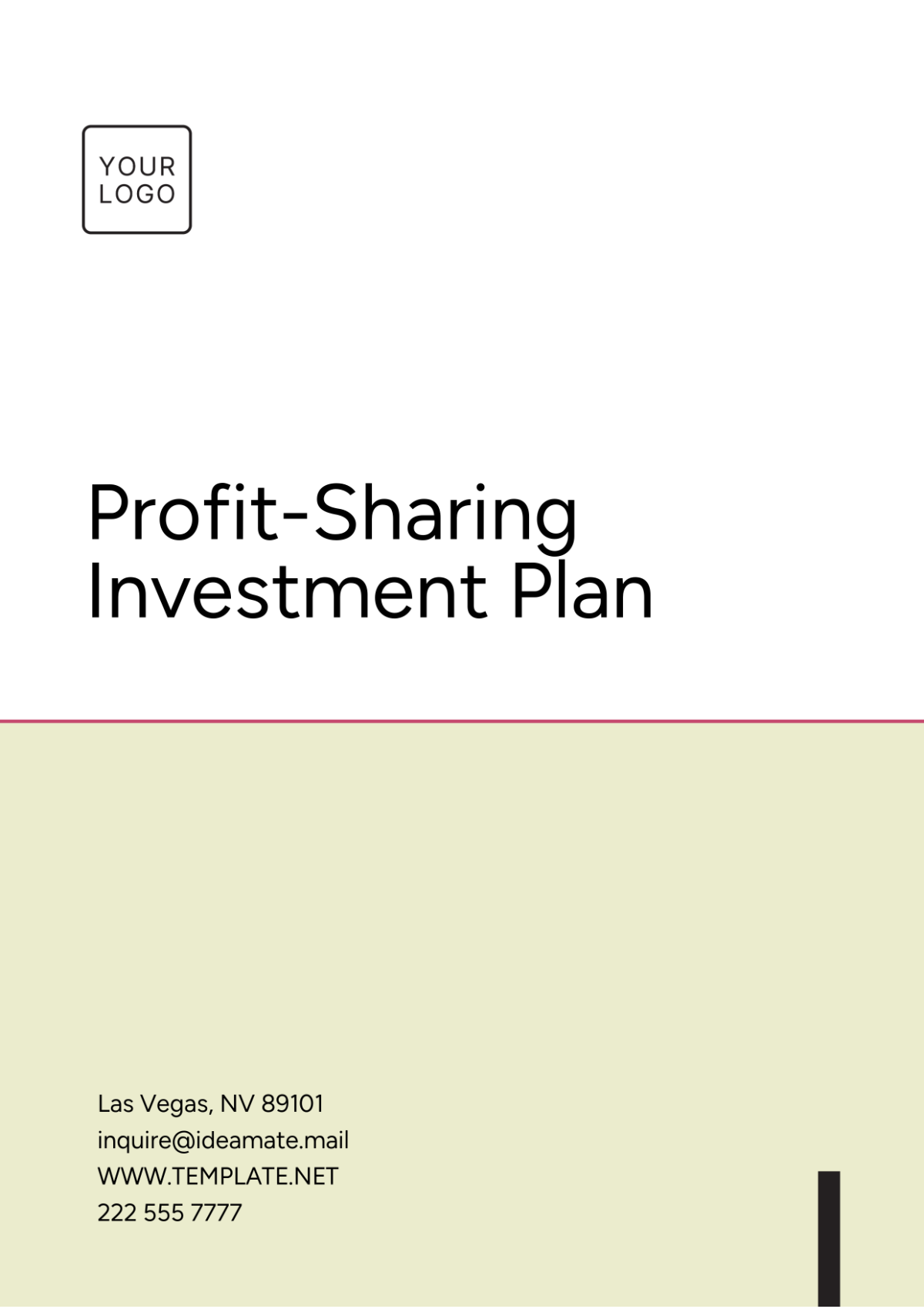
I. Introduction
The Profit-Sharing Investment Plan aims to create a robust framework that enables companies to distribute a portion of their profits to employees, aligning their interests with those of the business and fostering a sense of shared success. By providing financial incentives tied directly to company performance, the plan encourages employees to contribute to the company's growth and profitability. This document outlines the structure, benefits, implementation steps, considerations for success, potential challenges, and metrics for measuring the plan's effectiveness.
II. Benefits of Profit-Sharing Investment
A. For Employees
Increased Motivation and Engagement: Employees feel a greater sense of ownership and responsibility towards their work, leading to higher productivity and innovation.
Financial Security and Opportunity for Wealth Accumulation: Profit-sharing creates a supplementary income stream that can contribute to long-term financial goals, such as home ownership, retirement, or education.
Enhanced Loyalty and Reduced Turnover: Employees are more likely to remain with a company that rewards their contributions, resulting in decreased recruitment and training costs.
B. For Employers
Improved Productivity and Morale: A motivated workforce contributes to higher efficiency and improved workplace culture.
Attraction and Retention of Top Talent: Competitive profit-sharing plans can differentiate a company in the job market, appealing to high-caliber candidates.
Alignment of Employee Goals with Company Objectives: When employees have a stake in the company’s financial success, they are more likely to prioritize actions that benefit the organization.
III. Structure of the Plan
A. Eligibility Criteria
Minimum Tenure Requirement: Employees are required to fulfill a specified service period (such as 12 months) before they qualify to participate.
Performance Metrics for Participation: Eligibility may be tied to individual or team performance metrics, ensuring that contributions are recognized.
B. Allocation and Distribution
Year | Profit Percentage | Disbursement Period |
|---|---|---|
Year 1 | 5% | Annually |
Year 2 | 7% | Bi-Annually |
Year 3 | 10% | Quarterly |
C. Investment Options
Stock Options: Allow employees to purchase company stock at a predetermined price, encouraging long-term investment in the company's success.
Retirement Plans (401k or Equivalent): Contributions can be funneled into retirement accounts, promoting long-term financial security.
Direct Bonuses and Cash Distributions: Immediate financial rewards that can be reinvested or spent as employees choose.
IV. Implementation Steps
A. Initial Planning
Form a Committee: Create a cross-functional team to oversee the design and execution of the plan, ensuring diverse perspectives.
Conduct Feasibility Studies and Financial Analysis: Assess the financial health of the organization to determine the feasibility of profit-sharing.
Set Clear Objectives and Goals: Define what the organization aims to achieve through the profit-sharing plan.
B. Communication and Training
Develop a Communication Strategy: Create materials that clearly explain the plan's details, benefits, and eligibility criteria.
Hold Training Sessions for Managers and Employees: Educate all stakeholders about the plan and its significance.
Continuously Update and Inform Employees: Regular updates help maintain engagement and transparency.
C. Monitoring and Adjustments
Regularly Review the Plan’s Performance: Analyze the financial impact and employee participation rates.
Solicit Feedback from Employees and Stakeholders: Create forums for employees to share their thoughts and experiences.
Make Necessary Adjustments Based on Financial Results and Feedback: Be willing to adapt the plan to meet evolving business needs and employee expectations.
V. Legal and Tax Considerations
A. Compliance with Regulations
Ensure the profit-sharing plan complies with local, state, and federal laws governing employee compensation and benefits.
B. Tax Implications
Analyze the tax impact on both employers and employees, consulting with tax professionals to optimize tax advantages.
VI. Potential Challenges
A. Misalignment of Expectations
Employees may have unrealistic expectations about the profit-sharing amounts. Clear communication regarding how profits are calculated can mitigate this issue.
B. Market Volatility
Profit-sharing is dependent on the company's profitability, which can be influenced by market conditions. A robust plan should include contingencies for poor financial years.
C. Administrative Burden
The implementation and maintenance of a profit-sharing plan can require significant administrative resources. Organizations should ensure they have the necessary systems in place.
VII. Case Studies
A. Success Stories
Company A: Implemented a profit-sharing plan that resulted in a 20% increase in employee retention over three years, alongside improved overall productivity metrics.
Company B: After introducing profit-sharing, saw a significant rise in employee satisfaction scores, indicating a stronger connection between employee contributions and rewards.
B. Lessons Learned
Regularly reassess the plan based on employee feedback and market conditions. Flexibility and responsiveness are key to long-term success.
VIII. Measuring Success
A. Key Performance Indicators (KPIs)
Employee Retention Rates: Monitor changes in turnover as a measure of employee satisfaction with the profit-sharing plan.
Employee Engagement Scores: Use surveys to assess changes in motivation and morale over time.
Financial Performance Metrics: Track the correlation between profit-sharing distributions and overall company performance.
B. Regular Review and Reporting
Conduct annual reviews to assess the impact of the profit-sharing plan on employee performance and company profitability.
- 100% Customizable, free editor
- Access 1 Million+ Templates, photo’s & graphics
- Download or share as a template
- Click and replace photos, graphics, text, backgrounds
- Resize, crop, AI write & more
- Access advanced editor
You may also like
- Finance Plan
- Construction Plan
- Sales Plan
- Development Plan
- Career Plan
- Budget Plan
- HR Plan
- Education Plan
- Transition Plan
- Work Plan
- Training Plan
- Communication Plan
- Operation Plan
- Health And Safety Plan
- Strategy Plan
- Professional Development Plan
- Advertising Plan
- Risk Management Plan
- Restaurant Plan
- School Plan
- Nursing Home Patient Care Plan
- Nursing Care Plan
- Plan Event
- Startup Plan
- Social Media Plan
- Staffing Plan
- Annual Plan
- Content Plan
- Payment Plan
- Implementation Plan
- Hotel Plan
- Workout Plan
- Accounting Plan
- Campaign Plan
- Essay Plan
- 30 60 90 Day Plan
- Research Plan
- Recruitment Plan
- 90 Day Plan
- Quarterly Plan
- Emergency Plan
- 5 Year Plan
- Gym Plan
- Personal Plan
- IT and Software Plan
- Treatment Plan
- Real Estate Plan
- Law Firm Plan
- Healthcare Plan
- Improvement Plan
- Media Plan
- 5 Year Business Plan
- Learning Plan
- Marketing Campaign Plan
- Travel Agency Plan
- Cleaning Services Plan
- Interior Design Plan
- Performance Plan
- PR Plan
- Birth Plan
- Life Plan
- SEO Plan
- Disaster Recovery Plan
- Continuity Plan
- Launch Plan
- Legal Plan
- Behavior Plan
- Performance Improvement Plan
- Salon Plan
- Security Plan
- Security Management Plan
- Employee Development Plan
- Quality Plan
- Service Improvement Plan
- Growth Plan
- Incident Response Plan
- Basketball Plan
- Emergency Action Plan
- Product Launch Plan
- Spa Plan
- Employee Training Plan
- Data Analysis Plan
- Employee Action Plan
- Territory Plan
- Audit Plan
- Classroom Plan
- Activity Plan
- Parenting Plan
- Care Plan
- Project Execution Plan
- Exercise Plan
- Internship Plan
- Software Development Plan
- Continuous Improvement Plan
- Leave Plan
- 90 Day Sales Plan
- Advertising Agency Plan
- Employee Transition Plan
- Smart Action Plan
- Workplace Safety Plan
- Behavior Change Plan
- Contingency Plan
- Continuity of Operations Plan
- Health Plan
- Quality Control Plan
- Self Plan
- Sports Development Plan
- Change Management Plan
- Ecommerce Plan
- Personal Financial Plan
- Process Improvement Plan
- 30-60-90 Day Sales Plan
- Crisis Management Plan
- Engagement Plan
- Execution Plan
- Pandemic Plan
- Quality Assurance Plan
- Service Continuity Plan
- Agile Project Plan
- Fundraising Plan
- Job Transition Plan
- Asset Maintenance Plan
- Maintenance Plan
- Software Test Plan
- Staff Training and Development Plan
- 3 Year Plan
- Brand Activation Plan
- Release Plan
- Resource Plan
- Risk Mitigation Plan
- Teacher Plan
- 30 60 90 Day Plan for New Manager
- Food Safety Plan
- Food Truck Plan
- Hiring Plan
- Quality Management Plan
- Wellness Plan
- Behavior Intervention Plan
- Bonus Plan
- Investment Plan
- Maternity Leave Plan
- Pandemic Response Plan
- Succession Planning
- Coaching Plan
- Configuration Management Plan
- Remote Work Plan
- Self Care Plan
- Teaching Plan
- 100-Day Plan
- HACCP Plan
- Student Plan
- Sustainability Plan
- 30 60 90 Day Plan for Interview
- Access Plan
- Site Specific Safety Plan





